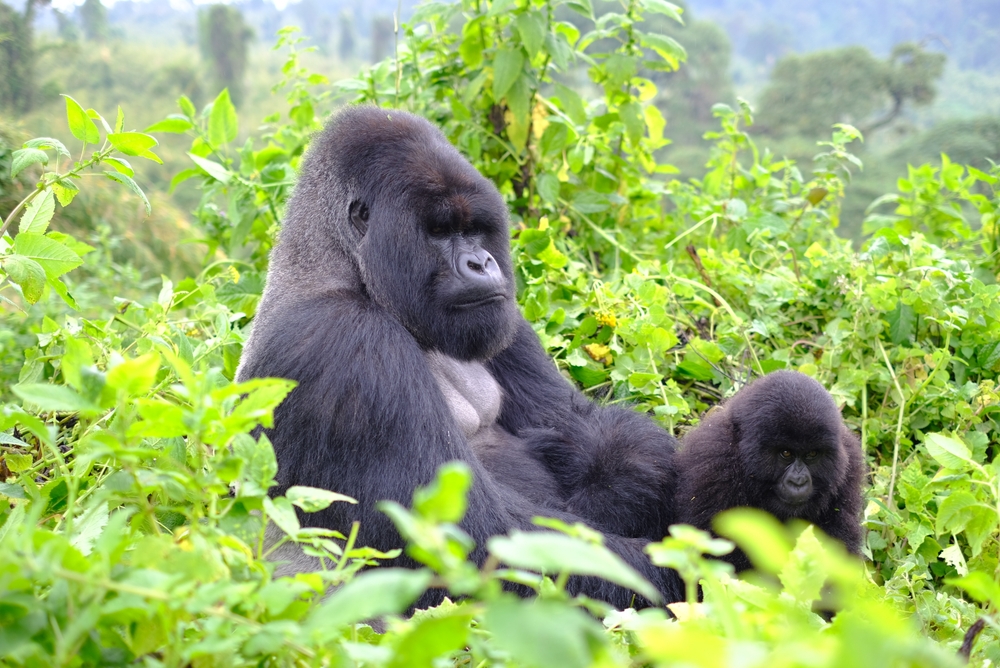An unusual hypothetical question has captured the internet’s collective imagination in recent weeks, generating thousands of reactions across social media platforms. The scenario in question, whether 100 humans could successfully defeat a single silverback gorilla in direct confrontation, has evolved from a seemingly absurd proposition into a surprisingly complex thought experiment that reveals fascinating aspects of comparative biology and human psychology.
The viral nature of this debate offers a window into how entertaining hypothetical scenarios can engage public interest in scientific topics that might otherwise remain in academic journals. As zoologists and primatologists watch from the sidelines, casual observers are suddenly discussing primate muscle density, coordination strategies, and the evolutionary trade-offs between strength and dexterity.
How a simple question ignited widespread fascination
The current wave of gorilla-themed discussions traces back to an April 2023 social media post on X (formerly Twitter). User @DreamChasnMike proposed that 100 humans working in coordinated fashion could overcome a silverback gorilla, with the crucial caveat that all participants would need to demonstrate complete commitment to the task.
This straightforward but provocative claim quickly resonated across the platform, generating numerous response threads, memes, and even amateur scientific analyses. The conversation’s persistence over several months demonstrates how certain hypothetical scenarios strike a particular chord with online audiences, combining elements of humor, curiosity, and accessible scientific speculation.
The debate’s enduring popularity likely stems from its perfect blend of absurdity and legitimate scientific inquiry, a combination that invites both laughter and serious consideration of animal biology, human capabilities, and theoretical strategy.
4 remarkable aspects of gorilla physiology challenging human advantage
The scientific reality behind this social media phenomenon reveals several startling facts about gorilla biology that put the hypothetical matchup into perspective:
Disproportionate strength ratio: Silverback gorillas possess strength estimated at 4 to 9 times greater than the average human. This disparity stems not just from their larger size but from fundamental differences in muscle fiber composition and nervous system organization that prioritize power over fine motor control.
Specialized grip capabilities: A gorilla’s hand strength measures approximately six times that of a human, with studies demonstrating crushing power sufficient to deform objects that would require mechanical assistance for humans to damage. This specialized gripping ability evolved to support their knuckle-walking locomotion and food processing needs in dense forests.
Impact resistance: The skeletal structure and muscle density of gorillas provide natural protection against blunt force impacts that would cause serious injury to humans. Their thicker cranial structure, reinforced with prominent sagittal crests, protects vital brain tissues from potential damage during confrontations.
Lifting capacity exceeding 1,800 pounds: Field researchers have documented gorillas moving fallen logs and other objects weighing more than ten times what an average human could lift. This extraordinary capacity for moving heavy objects emerges from both their muscular development and biomechanical advantages in leverage and joint structure.
These biological realities have led many commenters to question whether numerical advantage alone would be sufficient to overcome such profound physical disparities, regardless of human coordination or commitment levels.
Biological trade-offs between strength and dexterity
The entertaining nature of this debate has inadvertently highlighted an important evolutionary principle: the trade-offs between raw strength and neurological control that shaped primate development along different evolutionary paths.
Human evolution prioritized fine motor control, allowing for tool creation and manipulation, while sacrificing the extreme strength seen in our primate relatives. Gorillas followed an evolutionary path that emphasized physical power for dominance displays, protection, and efficient foraging in their native habitats.
This divergence created a significant strength disparity despite our shared evolutionary ancestry. Human muscles contain different proportions of fast-twitch and slow-twitch fibers, optimized for endurance and precision rather than explosive power. Additionally, the human nervous system dedicates substantial resources to controlling small, precise movements rather than generating maximum force.
Primatologists note that these evolutionary trade-offs mean the average human can utilize only about 65% of their theoretical maximum muscle strength, while gorillas can access approximately 90% of their potential power. This neurological difference further compounds the already substantial physical advantages possessed by gorillas.
The psychological dimension of hypothetical scenarios
Beyond the biological aspects, this viral debate illuminates interesting patterns in how people engage with hypothetical scenarios. Social media responses reveal varying approaches to the problem, with some users focusing on coordination strategies, others on potential tool use, and still others on the psychological impact of facing such an intimidating opponent.
The scenario taps into primal questions about human vulnerability in the natural world and our species’ historical reliance on cooperation and intelligence to overcome physical limitations. Some evolutionary psychologists suggest that such hypothetical discussions serve as modern expressions of ancient survival planning behaviors that once helped our ancestors navigate dangerous environments.
The debate also reflects our fascination with extreme comparisons and boundary cases that test the limits of our understanding. Similar viral hypotheticals, from how many five-year-olds an adult could defeat to whether someone would rather fight one horse-sized duck or 100 duck-sized horses, share this fundamental appeal of exploring capability limits through absurd scenarios.
What this viral phenomenon reveals about online communication
The persistence and evolution of this debate demonstrate how certain formats of online discussion can effectively engage public interest in scientific concepts. The question’s inherent humor provides an accessible entry point, while the underlying complexity allows for increasingly sophisticated analysis as conversations develop.
Communications researchers note that such hypothetical scenarios offer relatively safe common ground for online interaction. Unlike politically charged topics, the gorilla debate allows for disagreement without personal animosity, creating space for good-natured argument and creative problem-solving across different online communities.
The debate has also generated educational value, with some participants researching and sharing actual scientific data about primate biology that might otherwise never reach general audiences. Several zoologists and wildlife conservationists have leveraged interest in the topic to share broader information about gorilla behavior, ecology, and conservation challenges.
This pattern of engagement suggests potential applications for science communicators seeking to connect with broader audiences on complex biological topics through accessible, humorous entry points that gradually lead to more substantive information exchange.
The enduring appeal of impossible scenarios
As this peculiar debate continues circulating through social media channels, its popularity speaks to humanity’s enduring fascination with testing boundaries through imagination. Whether the question involves 100 humans against a gorilla or other impossible matchups, these scenarios provide entertainment value while simultaneously encouraging deeper consideration of the natural world’s complexity.
The scientific reality remains clear: the extraordinary strength, durability, and biological adaptations of silverback gorillas create advantages that numerical human superiority would struggle to overcome. Yet the debate’s persistence demonstrates that sometimes the scientific answer matters less than the journey of collective speculation and learning that emerges from considering such delightfully improbable questions.
For primatologists and conservation specialists, this unexpected spotlight on gorilla physiology creates opportunities to redirect public curiosity toward genuine understanding of these remarkable endangered animals and the challenges they face in an increasingly human-dominated world.














